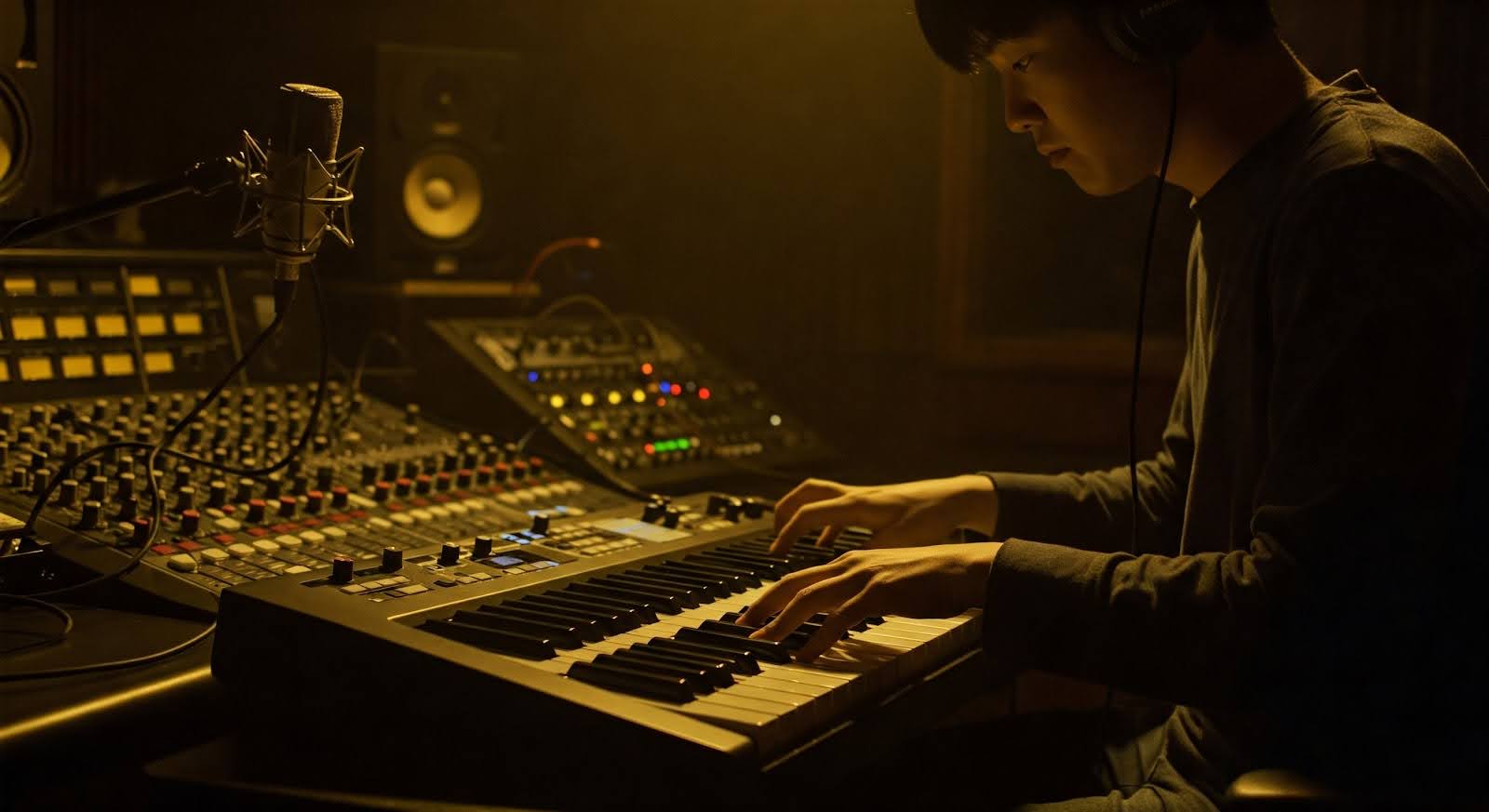The Power of Silence: Transform Your Mix with Masterful Dynamics and Space
Forget everything you think you know about mixing. Piling every sound on top of each other won’t get you that cinematic punch or professional polish. Mastering dynamics in mixing and using negative space in music is what separates cluttered tracks from those that breathe and captivate. Ready to give your mixes the depth film scoring demands? Let’s break down how silence can become your secret weapon.
Dynamics in Mixing

Mastering dynamics in your mix is crucial for achieving that rich, cinematic sound. Leaving every sound at the same level results in clutter. But what’s the secret to creating tracks that truly breathe with life?
Crafting Depth and Texture
The key to dynamic mixing, therefore, lies in building depth and texture. You want your music to feel layered, with each sound having its own place and purpose. To start, identify the primary elements in your track. Are your drums driving the energy? Or is it the lush synths? By focusing on the elements that matter most, you create a foundation for everything else to enhance, rather than overshadow.
Moreover, consider using techniques like sidechain compression. It allows one sound to momentarily dip in volume when another plays, thereby creating space and preventing clashes. For example, a subtle reduction in bass volume when the kick drum hits can add clarity. If you want more depth, explore our thoughtfully curated sample packs that provide you with the textures needed to elevate your mix.
Balancing Loudness and Silence
Balancing loudness with silence, undoubtedly, is a game-changer. Think of silence as the breath between phrases, thereby adding drama. It's about using negative space to highlight the power of your music. Consider the build-up in a song, where everything seems to pause just before the drop. That moment of silence, indeed, makes the impact of the drop much more powerful, doesn't it?
Here's the key insight: Silence isn’t just the absence of sound; rather, it’s a tool to amplify emotion. Therefore, experiment by cutting unnecessary elements during key moments. This can be the difference between an ordinary track and one that captivates. For more insights on how silence enhances film scores, dive deeper into this article.
Negative Space in Music

So, what exactly is negative space in music, and how can it transform your mixes? Let's explore how strategic silence can create contrast and evoke emotion.
Creating Contrast and Emotion
Incorporating contrast and emotion through negative space helps your track stand out. Think of it like painting; the blank canvas around the subject draws focus to it. In mixing, silence around key elements highlights their importance, making them more impactful.
Most people assume more sound equals a fuller mix. But by subtracting rather than adding, you allow your listeners to savor each note. Imagine a minimalist piano solo where every pause carries weight. That’s the power of contrast. Check out how this technique is applied in sound mixing for film.
Techniques for Spacious Mixes
Creating space in your mix can be as simple as reducing the number of active tracks at once. But how do you actually do that without losing the vibe? Here are some techniques:
-
Use EQ cuts: Remove frequencies in one instrument that clash with another. This prevents muddiness and creates room.
-
Delay and reverb: Use these effects subtly to push sounds back in the mix, providing an illusion of space.
-
Pan creatively: Distribute sounds across the stereo field for a wider and more open mix.
By practicing these techniques, your mixes will not only have clarity, but also an emotional resonance that draws listeners in.
Cinematic Mixing Techniques

Now that you understand dynamics and space, let’s dive into cinematic mixing techniques. These are the secrets to achieving that professional sound design quality you crave.
Professional Sound Design Secrets
Cinematic sound design takes your mixes from good to unforgettable. It's about crafting a soundscape that immerses your audience. Professionals use layering to add complexity. Layering different sounds builds a rich texture that keeps listeners engaged. For instance, a single sound effect can consist of multiple layers: a low rumble, a mid-frequency whoosh, and a high-pitched sizzle. Together, they create a more complete auditory picture.
Additionally, automation is your ally. Adjusting volume, panning, and effects over time makes your mix dynamic and engaging. Most people overlook its power, but automation can breathe life into static tracks.
Enhancing Audio Quality with Space 🎶
Enhancing your audio quality means focusing on every detail, including how space is utilized. A well-placed reverb can transport a listener to a concert hall or an intimate room, depending on your goal. But be cautious—too much can drown your mix.
Here's what to remember: Less can be more. By strategically placing reverb and carefully balancing each element, you elevate your mix to professional standards. If you're ready to see how these techniques come to life, explore further with this resource.
By integrating these principles, your mixes will not only sound professional but will also resonate with emotion and depth. Embrace the power of dynamics and space, and transform your music today!
Explore our premium sample packs and custom audio services to elevate your mix to professional standards.





